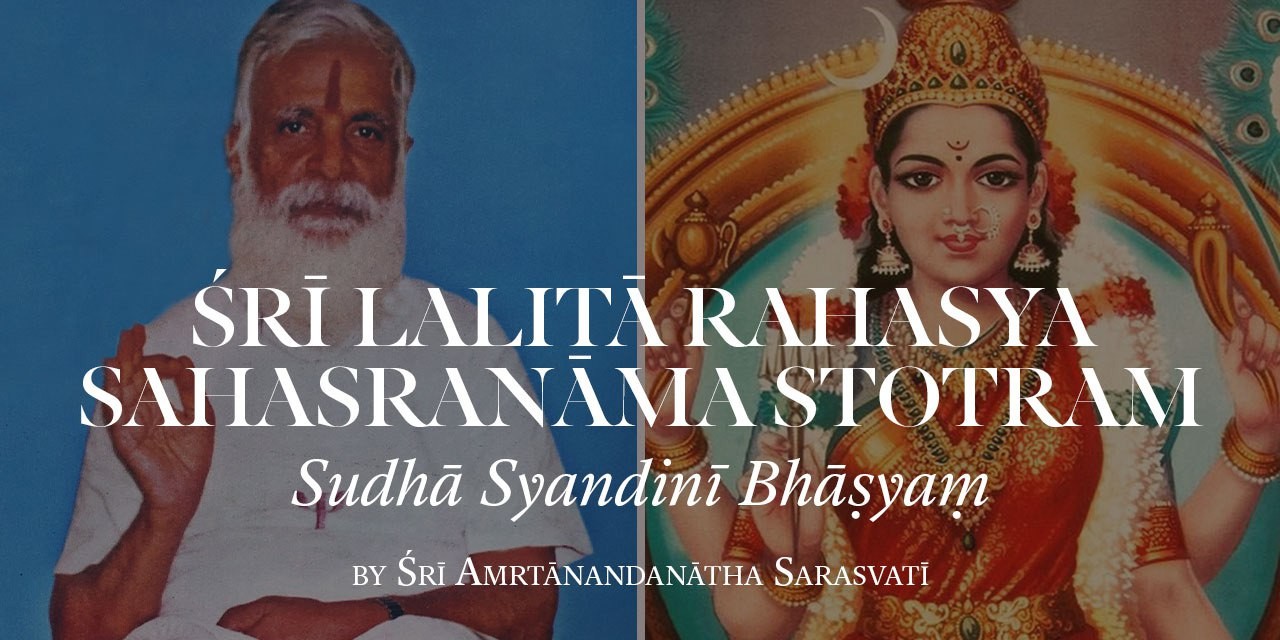
97. Samayāntasthā
Devi resides in the Kalā called Samāya.
The word Samāya means as equals belonging to Śakti, plus Māyā = Enjoyment. The pleasure of union with Śakti is the kalā of Samāya. The Samayācāra consists in performing such a union mentally. Here union means the cessation of all desires. In each petal of the lotus in the group of lotuses forming the Kula, there is a seed letter belonging to the Sanskrit alphabet, each of which represents a tattva, or a potency, or a desire. By successively traversing all the petals of all the lotuses one finally reaches the Sahasrāra lotus and there again one exhausts each of these potential desires 20 times over and ultimately reaches the state of desirelessness. Such a state is described by the fourth pāda of Gāyatrī called Mokṣapāda thus: ‘Parorajase sāvādoṁ’. This means that which is beyond the rajoguṇa, may She protect the Oṁkāra. Beyond the rajoguṇa means not having any saṅkalpa or desires at all. Having desires and fulfilling them mentally is part of Samayācāra. Ultimately this leads to a cessation of desires altogether. This is also Samayācāra. Devi belongs to the Samayācāra code of worship also. This mode of worship is prescribed for eminently capable people who can devote all their lives to executing the divine will and nothing else i.e. those who can be totally dedicated to God, serving God's will.
Source: Śrī Amṛtānandanātha Saraswatī "Sudhā Syandinī Bhāṣyaṃ" Typed Manuscript
(an incomplete commentary on Lalitā Sahasranāma)
